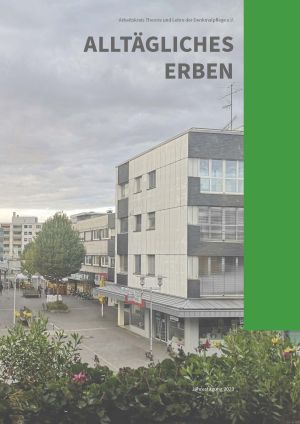How to Cite
Published
Intrinsisch extraktiv – zwei Leisten, zwei Pfeiler: die rote Bank
Anyone who has been to Hungary has probably sat on it: the piros pad or ‘red bench’. As evidence of everyday culture, it has shaped the urban landscape for almost a century -- at train stations, in the countryside, in the parks of Budapest and at many other places in Hungary. People talk about it and they talk while sitting on it. Quite aside from the fact that everyone has a memory of them, the red benches also represent carefully planned ensembles and typologies of the everyday. They seem insignificant, but are nevertheless significant. When I think of my childhood in Hungary, the benches come to mind. They are a common thread running through the places where I grew up. It is the everyday that makes up the townscape and is the driver behind most building production . However, the red benches as witnesses to the everyday culture of the interwar years and the socialist era have not yet received any attention from heritage conservation. Instead of adopting the conventional architectural-historical, monument-focused emphasis on the exceptional, I made the red benches the subject of my final thesis at the Bauhaus University in Weimar precisely because of their seriality. Studying the red bench through its history and its production assigns it an architectural-historical and a heritage value. In this essay I describe this process in order to open up a radical counter-position. The focus is on the contradictions that arise from the preoccupation with everyday heritage.








